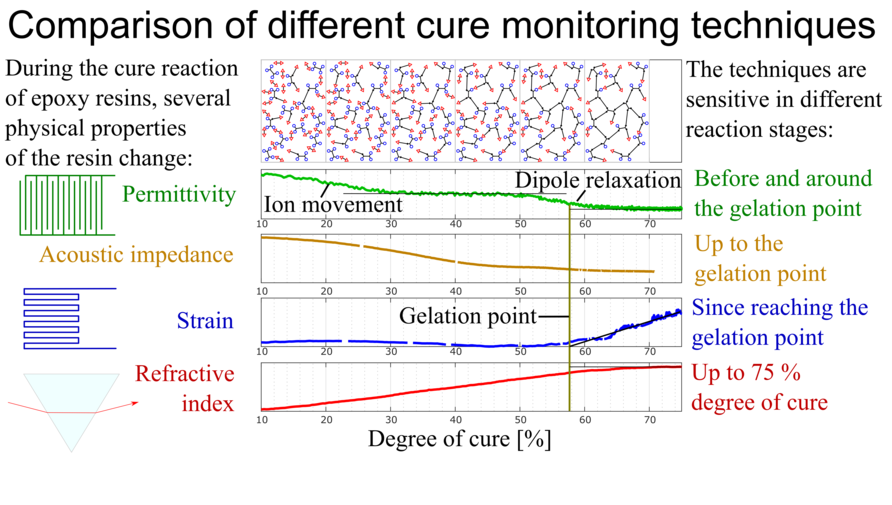The ability to measure the degree of cure of epoxy resins is an important prerequisite for making manufacturing processes for fibre-reinforced plastics controllable. Since a number of physical properties change during the curing reaction of epoxy resins, a wide variety of measurement methods exist. In this article, different methods for cure monitoring of epoxy resins are applied to a room-temperature curing epoxy resin and then directly compared. The methods investigated include a structure-borne sound acoustic, a dielectric, an optical and a strain-based observation method, which for the first time are measured simultaneously on one and the same resin sample. In addition, the degree of cure is determined using a kinetic resin model based on temperature measurement data. The comparison shows that the methods have considerable but well-explainable differences in their sensitivity, interference immunity and repeatability. Some measurement methods are only sensitive before and around the gel point, while the strain-based measurement method only reacts to the curing from the gel point onwards. These differences have to be taken into account when implementing a cure monitoring system. For this reason, a multi-sensor node is suitable for component-integrated curing monitoring, measuring several physical properties of the epoxy resin simultaneously.
A. Kyriazis, C. Pommer, D. Lohuis, K. Rager, A. Dietzel, M. Sinapius
Comparison of Different Cure Monitoring Techniques.
Sensors 2022, 22, 7301. (2022) [Link]

